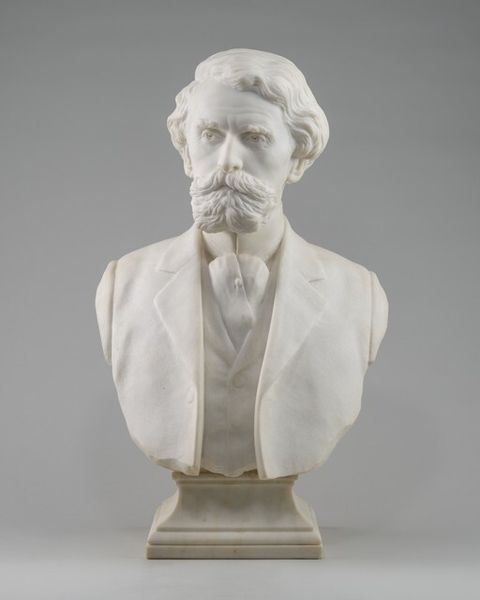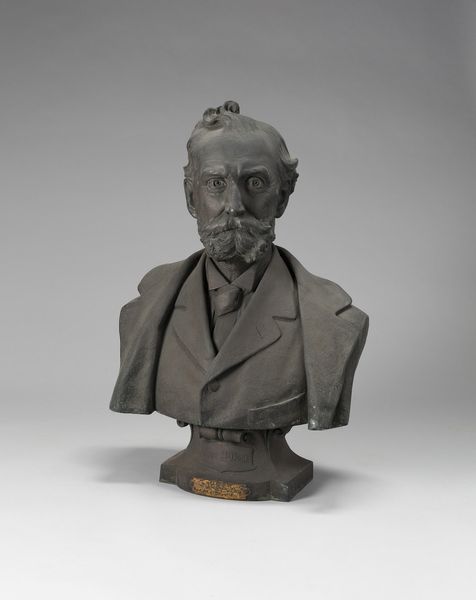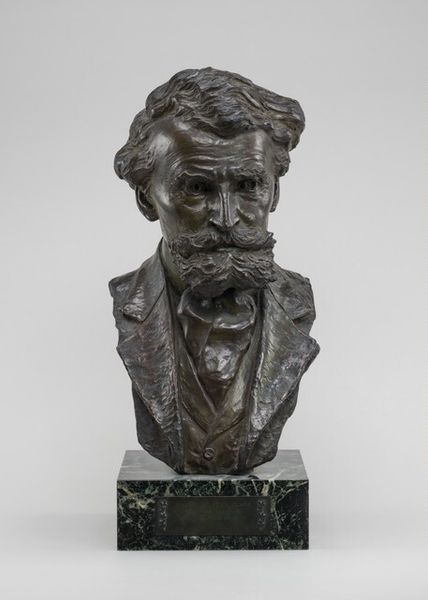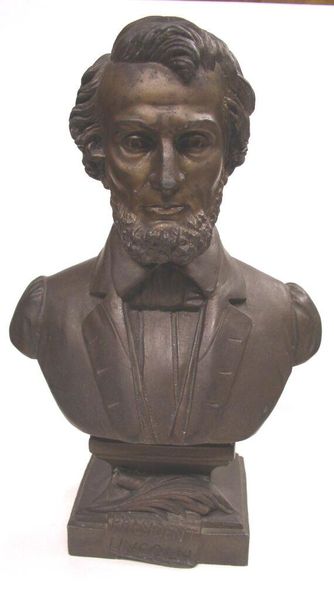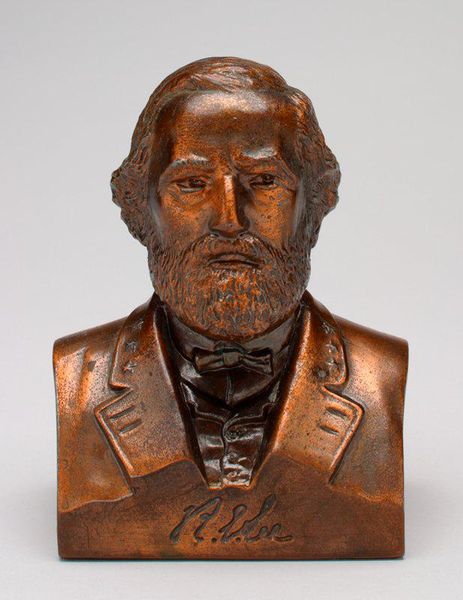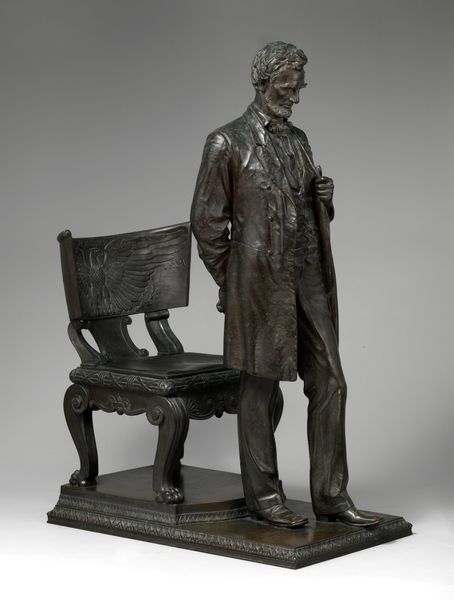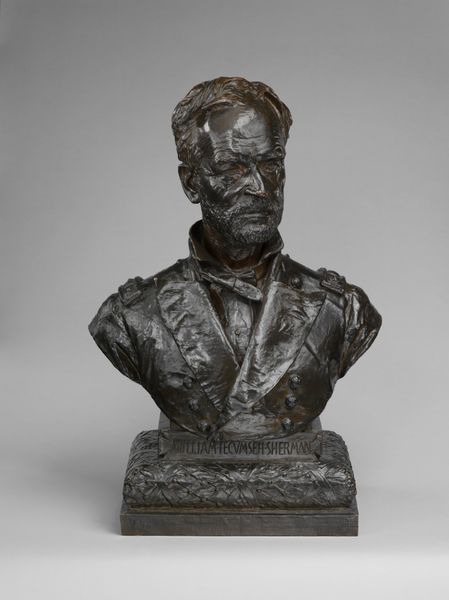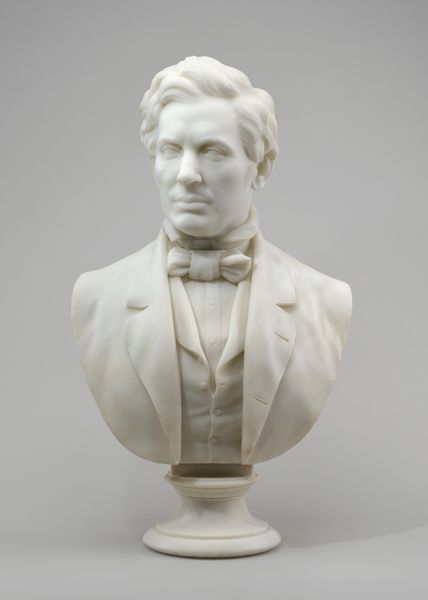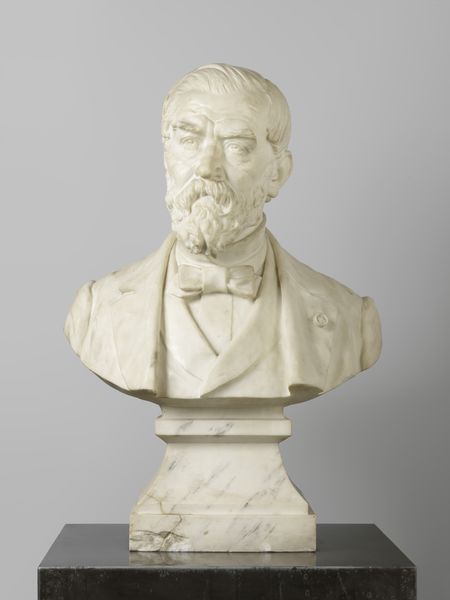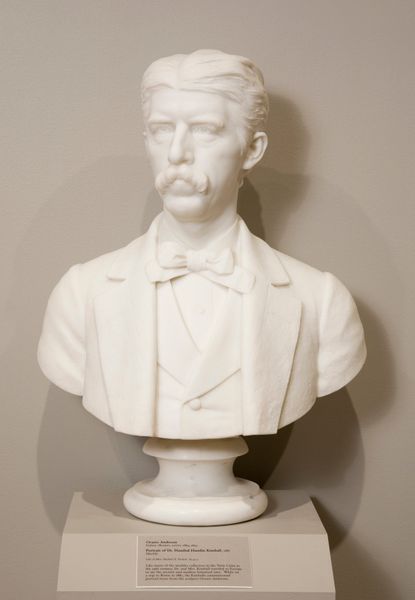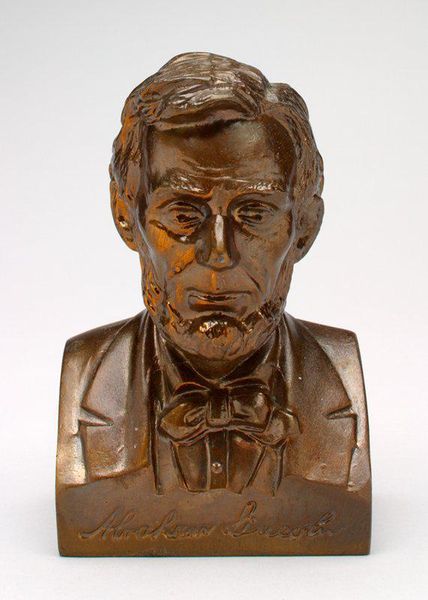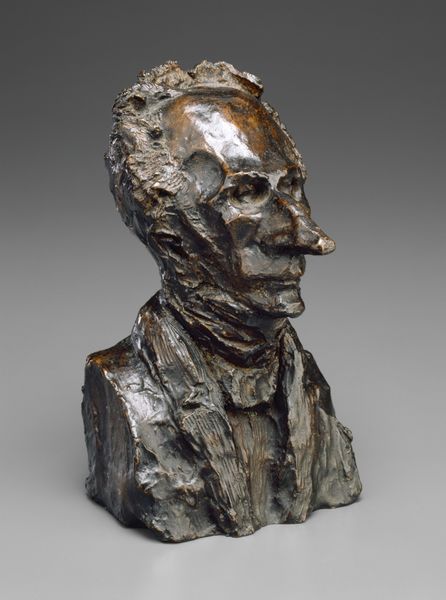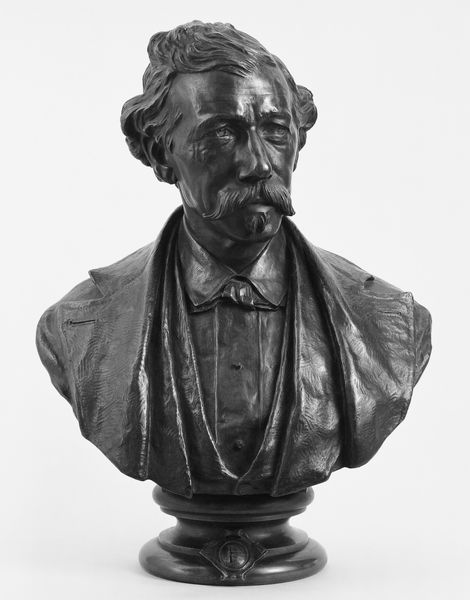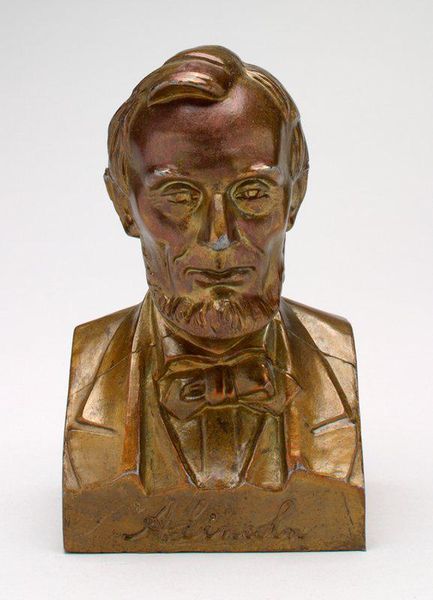
bronze, sculpture
#
portrait
#
sculpture
#
bronze
#
sculpture
#
modernism
#
realism
Dimensions: overall: 71.1 × 41.9 × 27.9 cm, 60 lb. (28 × 16 1/2 × 11 in., 27.216 kg)
Copyright: National Gallery of Art: CC0 1.0
Curator: Well, hello there! Doesn't this piece just radiate...ambition? It’s a bronze sculpture, created by Bryant Baker in 1925, titled “William A. Clark.” Something about it suggests power and prosperity, don't you think? Editor: Immediately, I'm struck by a certain...unease. Clark was a complex figure, heavily involved in mining and politics, marked by accusations of corruption. Seeing him rendered in bronze like this—imposing, solid—raises questions about how we memorialize individuals whose legacies are deeply problematic. Curator: Ah, you've hit on something vital! Baker, though, I think he aimed for classic portraiture. Look at the detail in the beard, the way the light catches the lapel...there’s a timeless quality. He wasn't just immortalizing a man but a type—the self-made industrialist, perhaps. Editor: Absolutely. It’s about myth-making. The sculpted bust form, inherited from classical antiquity, almost inevitably idealizes its subject. The textures in his jacket suggest the luxury that supported Clark's endeavors. He's not just William Clark, he’s *representing* a whole social order, one built on exploited labor. Curator: Hmm, is it glorifying though, or documenting? Baker doesn’t shy away from Clark's… intense gaze. There’s a hardness there that hints at ruthlessness as much as resolve. Editor: True, the face isn't entirely flattering. Yet, the act of creating the bust monumentalizes and grants status to a system that perpetuates social disparities and marginalizes entire groups of people. So, the artwork must engage with its larger context. The green tint in the bronze suggests patina or possible aging of the bronze through chemical reactions. Curator: You always bring it back to the broader view, don’t you? Me? I simply feel a flicker of…melancholy. Bronze ages so wonderfully. What secrets will it whisper in a hundred years? Will they remember the controversies? Editor: Exactly. Let’s hope it sparks the right conversations, even in a century's time, conversations that expose structures that permit some to acquire great riches by disadvantaging others. Curator: A powerful thought to take away from a static bust. Editor: Indeed, and thank you, this was certainly an evocative point for exploration.
Comments
No comments
Be the first to comment and join the conversation on the ultimate creative platform.
